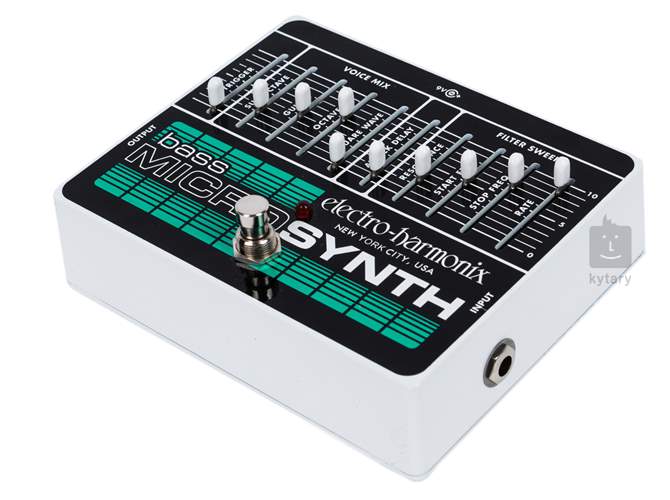
What can completely take your bass lines to a new level altogether is by using a bass synth pedal. Sure, getting all funky and stuff by using playing technique is one sure way to get yourself noticed, but being able to add something totally different – such as a distortion, chorus, or some other kind of modulation effect just takes things up a notch. There’s no doubt that bass effects pedals are a great way to make your bass tone unique.

So you may be wondering: “how can I change things up a bit”? As it is, you’ll either love it for its quirky low-tech peculiarities or avoid it for, uh, its quirky low-tech peculiarities.As much as I hate to say it, many times you know when you’re hearing a good bass player when you don’t notice them at all – they are locked in and ingrained into the framework of the song. One wishes that Electro-Harmonix would have upgraded the Micro Synth to current technical and construction standards. The Electro-Harmonix Micro Synthesizer Final Thought And for a couple of hundred bucks for a used one, it’s cheaper than the equivalent collection of individual stomp boxes. The filtering would sit well in a hip-hop or techno mix, and the background noise is just the kind of thing Beck would pump up in a scratch break. Add this together, and you might question the sanity of anyone who owns a Micro Synth.Īnd yet, the variety of distortions (including deliberately overdriving the preamp) would please any connoisseur of Edge City tone.
#Electroharmonix bass microsynth full
The octave voice could go head to head with Roger Mayer’s Octavia pedal, and the square wave voice is a fuzz box tone of Sixties vintage, full of crackle and fizz. The guitar voice is a dry signal, somewhat colored by the Micro Synth’s preamp circuit, and the only voice that will tolerate chords without generating wickedly erratic distortion. The suboctave voice adds a tone one octave below the guitar’s pitch, sounding very much like the Boss Octave pedal. In brief, the voice section consists of three forms of distortion and a clean tone. The controls are in two groups, voice and filter sweep, with a couple of sliders to control the note attack and entry of the filter characteristics. A trim pot on the back of the pedal sets the unit’s sensitivity to either single-coil or humbucker pickups, but all the important controls are in the form of sliders on the unit’s face.


The Micro Synthesizer is housed in a sheet-metal enclosure measuring 8 x 6 x 2 inches. Electro-Harmonix Micro Synthesizer Construction Imagine feeding your guitar to three fuzzboxes, an automatic volume pedal, and an automatic wah, and you’ll begin to get the picture. Unlike other guitar synthesizers, the Micro Synth is really a pedalboard’s worth of stomp boxes rolled into one, allowing your guitar (or whatever else you plug into it) to emulate the phat tones of vintage Seventies synth. Perhaps some clarity will emerge by first clearing up the “synthesizer” misnomer. Some exclaimed, “ It’s about time they reissued it!” Others muttered quietly, “ Yeah, I had one once, but I couldn’t tell if it was working right.” Love or confusion, indeed. When the word got out that we are reviewing Electro-Harmonix’s reissue of their Micro Synthesizer, reactions were decidedly mixed. 5 Electro-Harmonix Micro Synthesizer Video Review


 0 kommentar(er)
0 kommentar(er)
